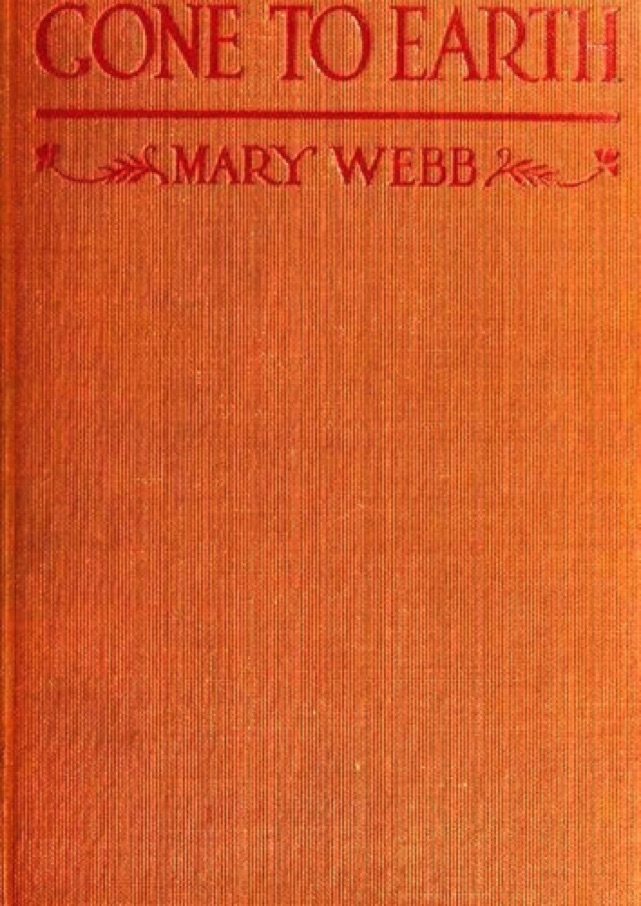THE SALAMANCA CORPUS:
DIGITAL ARCHIVE OF ENGLISH DIALECT TEXTS
SHROPSHIRE
Leclaire (1954: 288) “Born at Leighton, near Cressage, under Wrekin, Shropshire. Her father was a schoolmaster of Welsh descent, and her mother a Scott of Sir Walter Scott’s clan. She was the eldest of six children. Her early childhood was spent at The Grange, near Much Wenlock; from 12 to 21 she lived at Stanton-on-Hine-Heath, six miles from Shrewsbury. In 1912 she married Henry B. L. Webb, a Cambridge graduate, and a native of Shropshire. They spent two years at Weston-super-Mare where her husband had a post in a school. Then they returned to Shropshire, living at Pontesbury and Lyth Hill, as market gardeners, and selling their produce at their own stall in Shrewsbury market. They left Shropshire for London only in 1921, so that all but her last two volumes were written in Shropshire.
Her novels, in which we watch the struggle of the spirit and the flesh, are laid in the Shropshire countryside, “the only place where she herself was ever happy”. (Thomas Moult, Mary Webb, Her Life and Work, 1932”.
WORKS
1916. The Golden Arrow. London: Constable and Co.
“The scenes are Shropshire and the Welsh border.” Leclaire (1954: 289)
1917. Gone to Earth. London: Constable and Co. SC.
“The Welsh border, with its beauty, and wildness.” Leclaire (1954: 289)
1920. The House in Dormer Forest. 1920. London: Hutchinson and Co.
“Shropshire is the scene.” Leclaire (1954: 289)“
1922. Seven for a Secret. London: Hutchinson and Co.
“Shropshire and the Welsh border.” Leclaire (1954: 289)
“The foregoing four novels are set “in the hill country of south Shropshire, between the Clee Hills and
the Breiddens, and between Shrewsbury and Ludlow.” Leclaire (1954: 289)
1924. Precious Bane. London: Jonathan Cape.
“A Shropshire peasant with a fixed idea. “The scene is the country of north Shropshire meres – the
Ellesmere district, but the dialect is that of south Shropshire. It is the country of the Severn lowlands
and isolated upland ridges where Celt and Saxon have met and mingled for centuries.” (Stanley
Baldwin’s Introduction to the 1928 edition.” Leclaire (1954: 290)
KINGKONG PROJECT
Mary (Gladys Meredith) WEBB, nee MEREDITH {UK} (F: 1881 Mar 25 - 1927 Oct 8)
q The Golden Arrow [f|1916]
7055 Gone To Earth [f|1917]
q The Spring Of Joy, Nature Essays [e|1917]
q The Spring Of Joy, Poems [p|1917]
q Selected Short Stories [s|1917]
q The House In Dormer Forest [f|1920]
q Seven For A Secret [1922]
q Precious Bane [f|1924]
Poems, And The Spring Of Joy [p|1928]
The Collected Works Of Mary Webb [s|1928-1929]
q Armour Wherein He Trusted [f|1929]
The Chinese Lion [f|1937]
Fifty-One Poems Hitherto Unpublished In Book Form [p|1946]
FOR FURTHER INFORMATION ABOUT HER LIFE AND WORKS SEE
Addison, H. 1931. Mary Webb. London: Cecil Palmer.
Byford-Jones, W. 1937. Shropshire Haunts of Mary Webb. Shrewsbury: Wilding & Son.
Chappell, W. R. 1930. The Shropshire of Mary Webb. London: Cecil Palmer.
http://www.bbc.co.uk/shropshire/content/articles/2008/07/10/mary_webb_feature.shtml
http://en.wikipedia.org/wiki/Mary_Webb
http://www.marywebbsociety.co.uk/
http://marywebb.stanford.edu/contacts/
http://pers-www.wlv.ac.uk/~me1927/mwebb/index.html
https://www.shropshiretourism.co.uk/mary-webb/
http://en.wikipedia.org/wiki/Mary_Webb
Moult, Th. 1932 Mary Webb, Her Life and Works. London: J. Cape.
Copyright © 2015- DING, María F.García-Bermejo Giner, The Salamanca Corpus, Universidad de Salamanca
LITERARY DIALECTS
1800-1950
WEST MIDLANDS
SHROPSHIRE PROSE
Mary Webb
(Née Mary Gladys Meredith)
(1881-1927)

